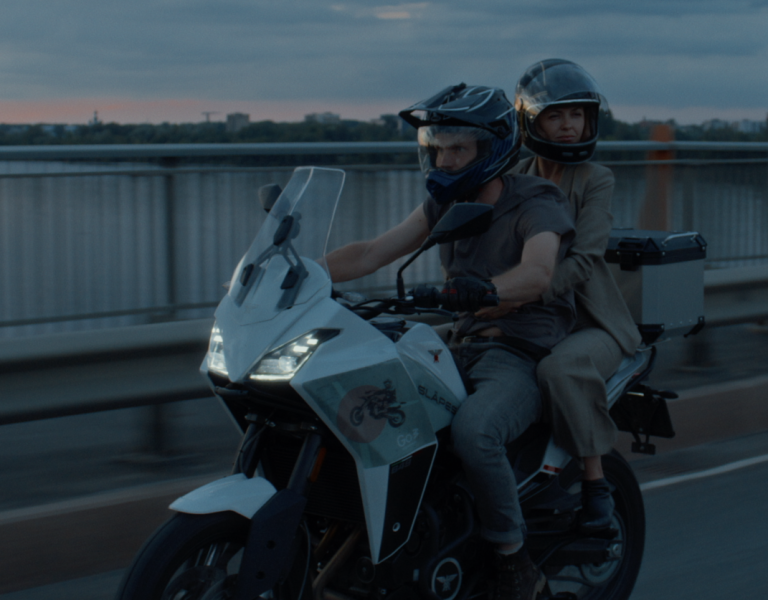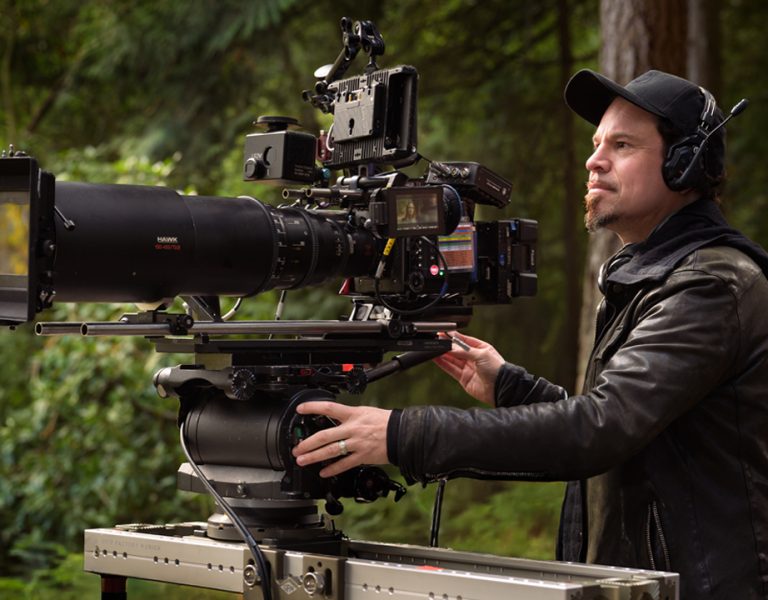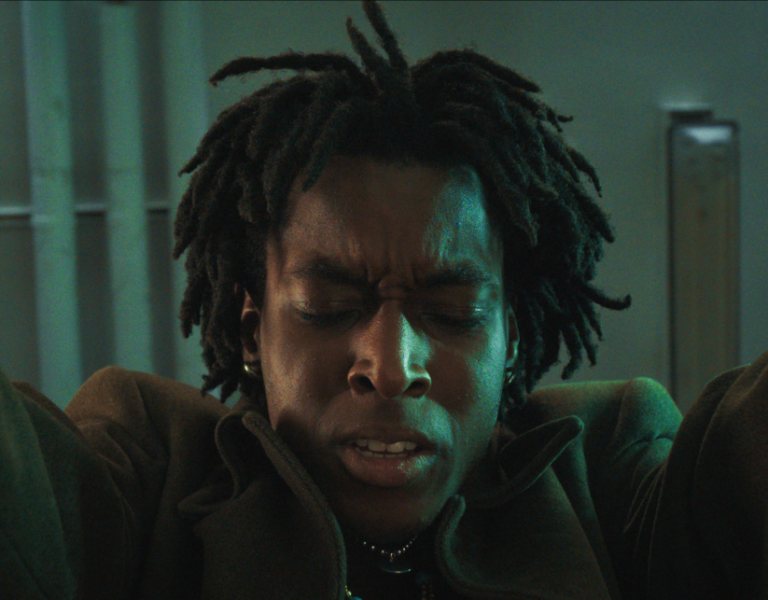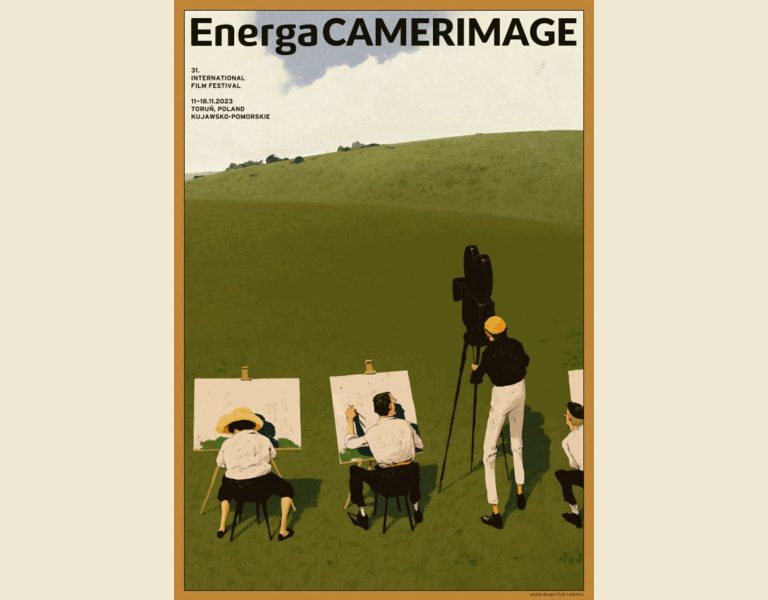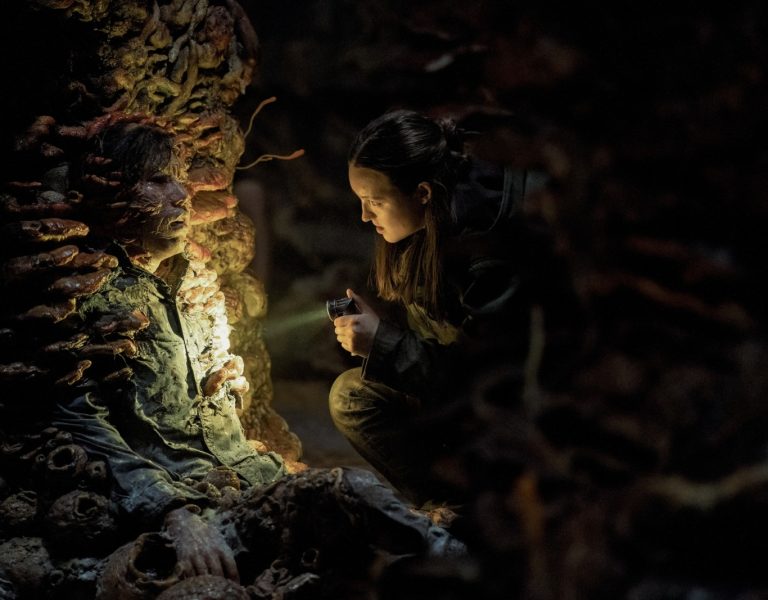Relive all the action from another successful edition of the celebrated festival with Lars Pettersson FSF.
Once again, from 11-18 November, the picturesque little medieval city of Toruń in Poland became the backdrop for the EnergaCAMERIMAGE International Film Festival dedicated to the art of cinematography. And just as the city’s most famous son, renowned astronomer Nicholas Copernicus, figured out in the 16th century that the Earth revolves around the sun, so most things in Toruń during this week revolve around movies: watching them, analysing them… and celebrating the people who make them! They even went so far as to name the nearest town Ciechocinek. ‘Ciecho- cine –k’…
OK, all kidding aside, you’d have to squint pretty hard to take in the quaint charm and beauty of Toruń this time around, since the rain was occasionally pouring down from very dark skies. A certain 1952 Stanley Donen musical comedy might actually have been the perfect film to run at this year’s festival.
But no matter, since what happens during Camerimage mostly happens indoors anyway, and the epicentre of the festival is the impressive CKK Jordanki building where the most prestigious screenings and award ceremonies take place. It’s also where you find the technical exhibition, which is usually laid out along a straight line, like the letter ‘I’. This year, however, it has expanded to almost twice the regular size, and is more in the shape of an ‘H’. And if Toruń is one of the crown jewels of Poland’s cultural heritage, the prize for ‘Poland’s Cinematic Pride and Joy’ must go to Łódź Film School, which celebrates its 75th anniversary this year, thereby placing it behind the Moscow Film School (104 years young) and LA’s USC School of Cinematic Arts (a sprightly 94 years old), but not many others!
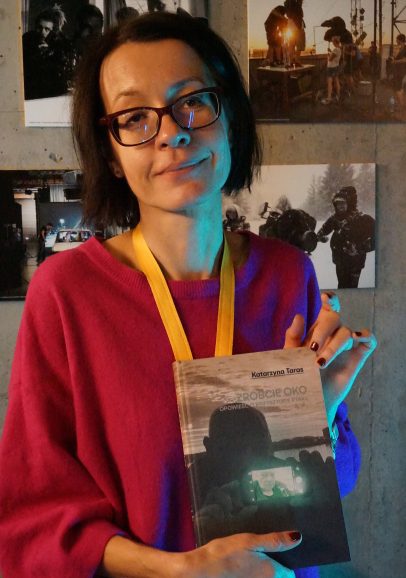
Łódź Film School has a wonderful booth at the technical exhibition, complete with a mini-cinema and a little bookstore. The school is represented here by both staff and students alike, and among the staff Professor Katarzyna Taras is particularly noteworthy to readers from the Swedish Society of Cinematographers (FSF) as she’s given lectures in Stockholm last year on famous cinematographers (Nykvist, Lippmann etc).
The rest of the exhibition is decidedly more ‘nuts-and-bolts’-orientated. Since Sony released their 8.6K Burano CineAlta camera just two months ago, which features an optional E-mount, Cooke’s timing in launching their SP3 series of full-frame lenses at this point is excellent! The two make a wonderful combination.
There are many things to like about these lenses, and both their physical size as well as their price tag is modest (as high-end lenses go). The size and weight is such that you think you’re holding a consumer DSLR lens, and they cost €3,900 each, or €18,500 for a full kit, so the kit is good value for money. The SP3s are based on the original Speed Panchros from the 1950s and the widest stop is T2.4. Focal lengths range from 25mm to 100mm.
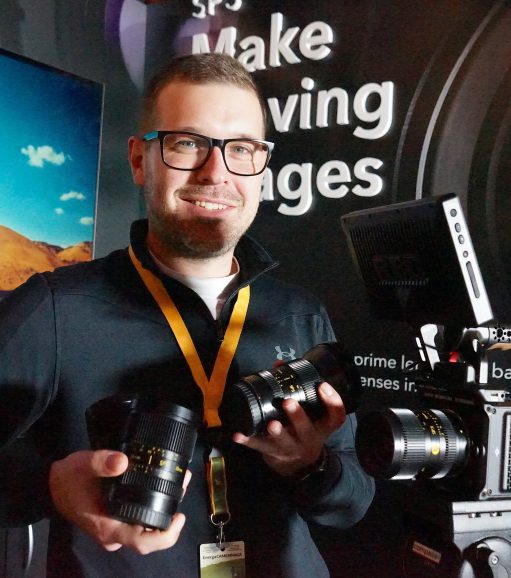
They come with E-mount fitted and Canon RF mount included in the box; L-mount and M-mount will be available in 2024. There will be no PL-mount for these lenses. Cooke has been shipping for two months and the market response is very positive. They’re currently analysing the feedback to see what people would like in terms of wider or longer focal lengths, etc.
And while on the topic of lenses, in the Vantage Film booth we learn that their MHX range of full frame hybrid anamorphics, which are spherical lenses with classic anamorphic characteristics such as elliptical bokeh and shallow depth of field, have now been supplemented with a super-35 range of lenses – the Minihawks! Vantage only rent out their product, they do not sell their lenses. They now have four sets each of MHX and Minihawks, and these are extremely popular. There are eight-nine focal lengths of the full frame and super 35 versions, respectively.

If there’s one connecting thread one could follow from Sony to Cooke, it’s that both have launched more moderately priced products very recently (the Burano costs less than half of the Venice 2). And the movie industry is going through a rough patch now, with the actors’/writers’ strike in the US halting productions and spiking interest rates affecting the buying power of rental houses and everyone else.
And the thread can be followed to one of the most popular booths at the exhibition, shared between ARRI itself and ARRI Rental. The ARRI CPO program, which translates as Certified Pre-Owned-programme, has been around several years, and is a division within ARRI itself, and certainly catches my eye at the ARRI booth. Through the CPO program such goodies as Mini LFs, Alexa 35s, complete sets of Signature Primes, etc, are available, and all at more affordable prices than brand new.
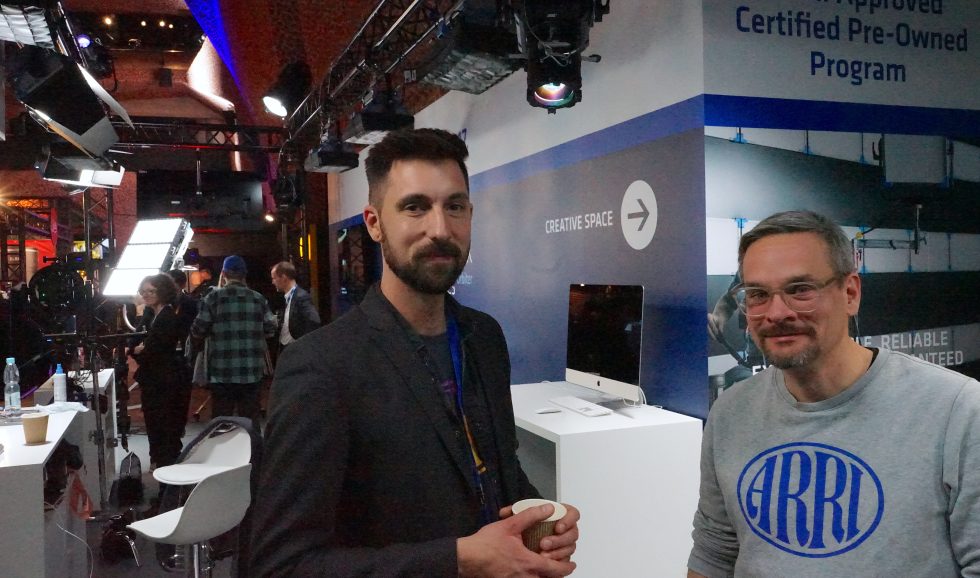
I’m not sure if I caught Grzegorz Najder in the Nanlux booth right after just having had ten cups of espresso, but that would explain a lot. Seen in this picture with the EVOKE 1200B bicolour LED light, Najder is most enthusiastic about the company’s products. ”Nanlux make great lights that change the way people work,” he explains, ”they are really game-changing. You can plug them in the wall in an ordinary outlet, they are totally flicker-free for high speed work and they only draw 20% of what a tungsten light would, which means you can go into the woods with just a small power generator or even batteries! No need for a generator truck.”
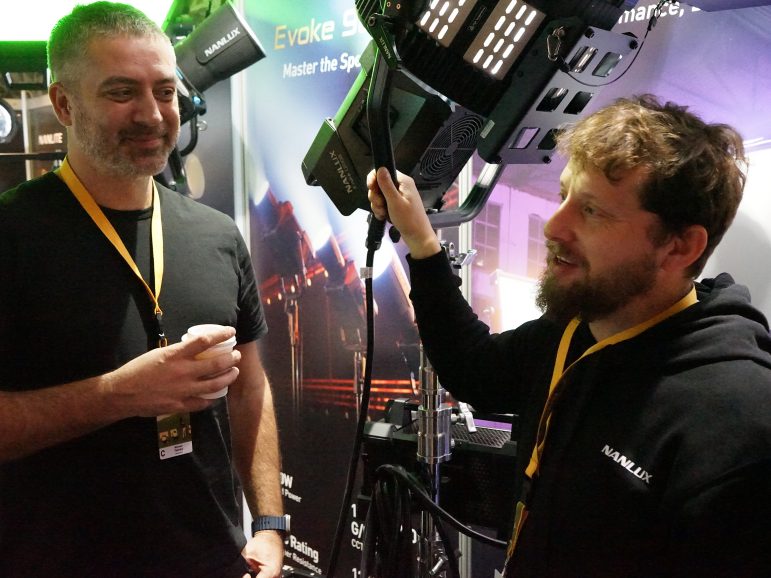
The ‘leitmotif’ of light continues appropriately enough with a company of German origins, Sumolight. Founded in 2011 by American gaffers and German engineers, they are here showcasing their latest product, the Sumomax. This is a 500 watt multi-use, modular fixture which is basically a hard light with beam-shaping capability through lens options, to shape the beam from 20° through 30°, 60° and 90°. In addition to that a diffuser lens is also available. The Sumomax will give you 23,000 lux at three metres -and you can even safely crank it up to 35,000 lux for 10 minutes without starting a fire. So it’s an all-in-one tool. And it’s modular, so you can build honeycombs out of it, kind of like Lego. Furthermore, it’s IP 65-classed so using it outdoors in rain will work just fine, and it’s the only light on the market that’s passively cooled, there are no fans in it! Retail price for the unit is €5,000, so if you want to build a honeycomb of seven units that’s €35,000.
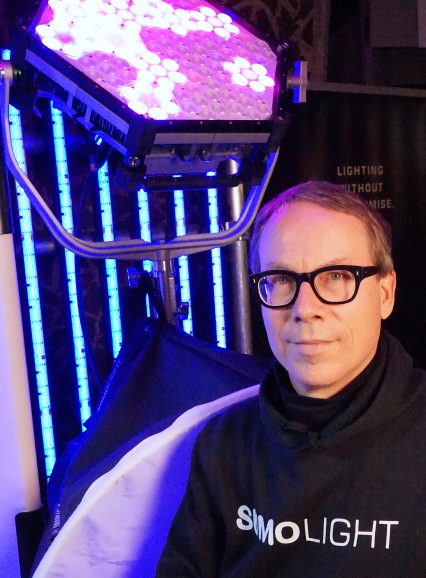
Over the last year or two Sumolight have been moving into live events as well, there’s a melding of fields taking place now where techniques used for rock concerts, live performances and movie work in LED volumes start to cross over from one to the other. In fact, the Sumomax is basically a monitor -you can play a video on it! You can do very realistic fire effects, for instance, simply by playing a videoclip of actual fire on the Sumomax.
What was shown at the BSC Expo in February earlier this year was still a prototype, but now Moon Smart Focus are running regular production and are already selling and shipping their multi-person focus assist system. This product is AI-driven and capable of identifying people’s eyeballs in its field of view. And as the people behind MOON Smart Focus are filmmakers themselves, and now that the actors’/writers’ strike is finally over, they are launching their ”Back to work campaign” which allows their customers to split up the payment to facilitate the purchase. “You can make your money before you have to spend it,” explains Moon’s Michel Cardoso Teixeira. “We offer a 90-day deferred payment for the product, plus an 18-month hardware upgrade guarantee: if there’s an upgrade to the hardware, you get the new version for free.” And as Moon is a Swedish company, they offer visitors to their booth two typically Swedish treats, the beverage Julmust and pepper cookies!
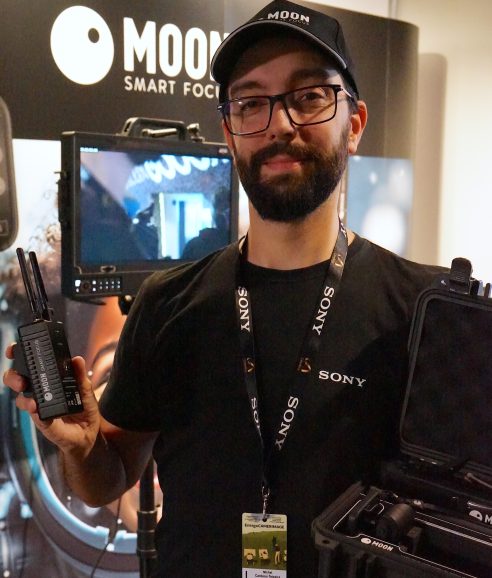
A bit further down the aisle, the only slightly larger company (pun intended) Zeiss also showcase an impressive Focus Assistance System in their booth. We had a chat with Sundeep Reddy, who is product manager – digital cinema products at Zeiss Group, and as fate would have it, he’s actually the guy responsible for bringing this technology to Zeiss’ attention in the first place, since camera tracking isn’t really what Zeiss are known for.
In all fairness, the Zeiss Cincraft Scenario is way more advanced than keeping track of what’s in front of your camera for focus pulling, because it’s basically a tool for seamless production of VFX shots. Say you’re shooting on a stage and the windows are green screen and you’re doing camera moves, or you’re in a LED volume, or using digital set extensions. It can be done by figuring everything out in post, but it’s a lot of work and not without pitfalls (if the background in your shots is intentionally out of focus for instance).
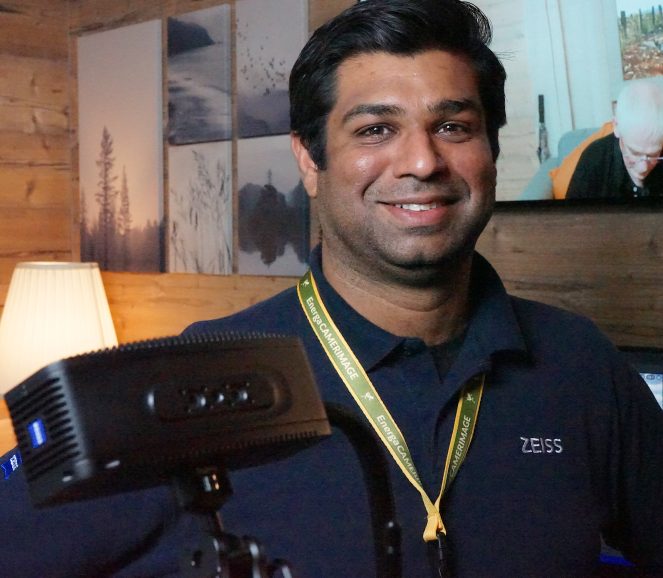
Enter the Cincraft Scenario; you attach it to your matte box and do your camera moves. The Cincraft will find natural markers in your scene, like the corner of a carpet, a lamp-post or basically anything in front of it that you would find in a room or an exterior, and record all the data – or it can be used to feed realtime CGI to an LED volume or green screen, adjusting the perspective as you move your camera. If you work in a total green screen environment you need to place out markers for the system, since there are no edges whatsoever there. Market response has been very positive and Zeiss will begin shipping this product in December.
This, the 31st edition of the festival, is of course so much more than just the technical exhibition. During this week there are almost a hundred seminars and workshops and many film screenings, as well as personal appearances by famous cinematographers, directors, actors and other prominent cinema professionals. Among the exciting new features screened here at the festival was Michael Mann’s Ferrari, a biopic covering the personal and professional struggles of Italy’s perhaps most famous car manufacturer and racing enthusiast. And whoever came up with the idea of Adam Driver playing Enzo Ferrari had a really inspired day at the office.
The recipients of the Main Competition Frog Awards were a no less stellar circle. The Golden Frog went to the impressively prolific Australian filmmaker Warwick Thornton, who had both directed and shot The New Boy. Ed Lachman ASC picked up the Silver Frog for his work on El Conde. One can’t help wondering what Lachman’s mantlepiece looks like by now.
And Robbie Ryan BSC ISC scored twice, taking home both the Bronze Frog and the Audience Award with the Yorgos Lanthimos-helmed feature Poor Things.
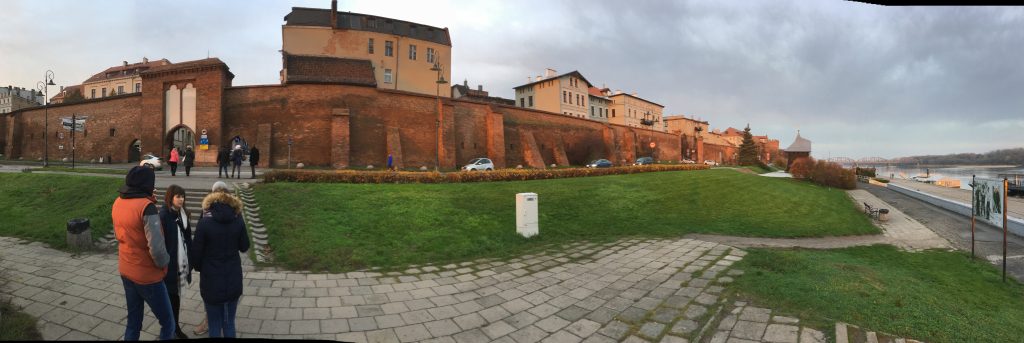
–
This article was originally published by the Swedish Society of Cinematographers (FSF).

